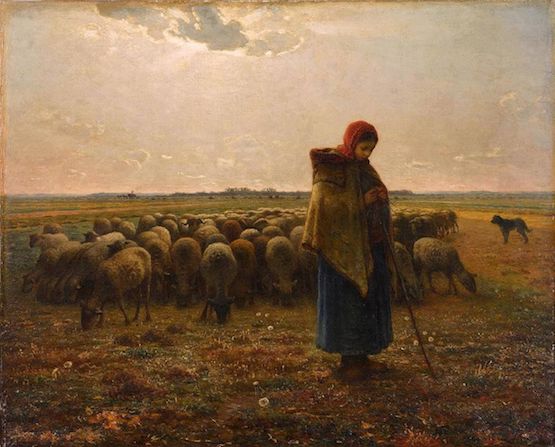
Breed standards are not arbitrarily worded documents, each is a blueprint on how to build a dog. More accurately, they are “schematics” for the ideal in a breed. They don’t always explain why things are worded as they are, the presumption being that individuals reading a standard may already have a general idea of the breed’s purpose.
The Briard standard, for one, does offers a clue about the breed’s purpose in its section on gait: “Strong, flexible movement is essential to the sheepdog.” Now we know the breed is a sheepdog, but sheepdog breeds don’t all herd alike. Why, one might ask, is it worth mentioning in this standard that the movement of the Briard “has been described as ‘quicksilver,’ permitting him to make abrupt turns, springing starts and sudden stops required of the sheepherding dog,” but also adding that this dog is, “above all a trotter, single-tracking, occasionally galloping and he frequently needs to change his speed to accomplish his work?”
In our view, a question like this underscores the importance of knowing the link between a breed, its purpose, and where it was developed.
The photo below is of farmland in France. You’ll notice there are no fences.

We are unable to show you photographs of row farming in France from centuries ago, but we ask that you look at the modern photo below (probably of vineyards) and imagine something like it, but two hundred years ago.

Between the two images, you’ll notice land broken into smaller parcels undelineated by fencing, but individual farms growing crops in rows. We’re showing you these photographs to explain why the breed standard describes the Briard’s movement as it does.
After the French Revolution, large landholdings were broken up. Briards worked in unfenced farm valleys where sheep grazed between rows of crops. Their job was to keep the sheep moving along the grassy strips and discourage them from eating the crops. Navigating sheep through narrow rows, and darting to keep a ewe or ram in line called for a dog that had to be quick, agile, and light on its feet – namely, a dog with movement like “quicksilver.”
Briards were also expected to move large flocks to different pasture lands, i.e., to the mountains for summer grazing. Trotting was the most efficient gait when covering miles as these dogs did, but if a vegetable crop or row of fruit was breached, a Briard might change speed to a gallop to get to the miscreant.
The Briard Club of America offers study guide material and notes: “Today the farms of Western Europe are generally small landholdings usually cooperative or tenanted. The sheep are kept in large barns at night and led to pasture each morning by the shepherd, who walks along the road with the flock strung out behind him and kept in procession by the dogs. The pasture/graze may be as small as an acre and flanked by orchards or fields of vegetables or other crops. The dog’s duty now is to keep the sheep contained in the graze area as the shepherd is subject to a considerable fine if the sheep get into the crops. In order to do this the dogs become a “living fence” around the graze circumference, constantly patrolling the perimeter, working as a team with the shepherd to maintain a peaceful environment for the flock, but never allowing any to stray. The dogs work mostly at the trot but may gallop occasionally if it appears that a border might be breached. In most cases two dogs are used, each patrolling two sides of the area, but in some cases it’s a single dog working the boundary closest to the sheep. The dogs are in motion almost constantly, trotting back and forth to keep their charges out of mischief.”
We circle back to where we started, which is why a breed is described as it is. Mindful of the breed’s purpose, writers of the Briard standard were careful to uphold the legacy of their breed as a pastoral dog developed to help herd livestock, but also cognizant of where the dogs did their pastoral work: Among crop rows, and in the bocages of France.
